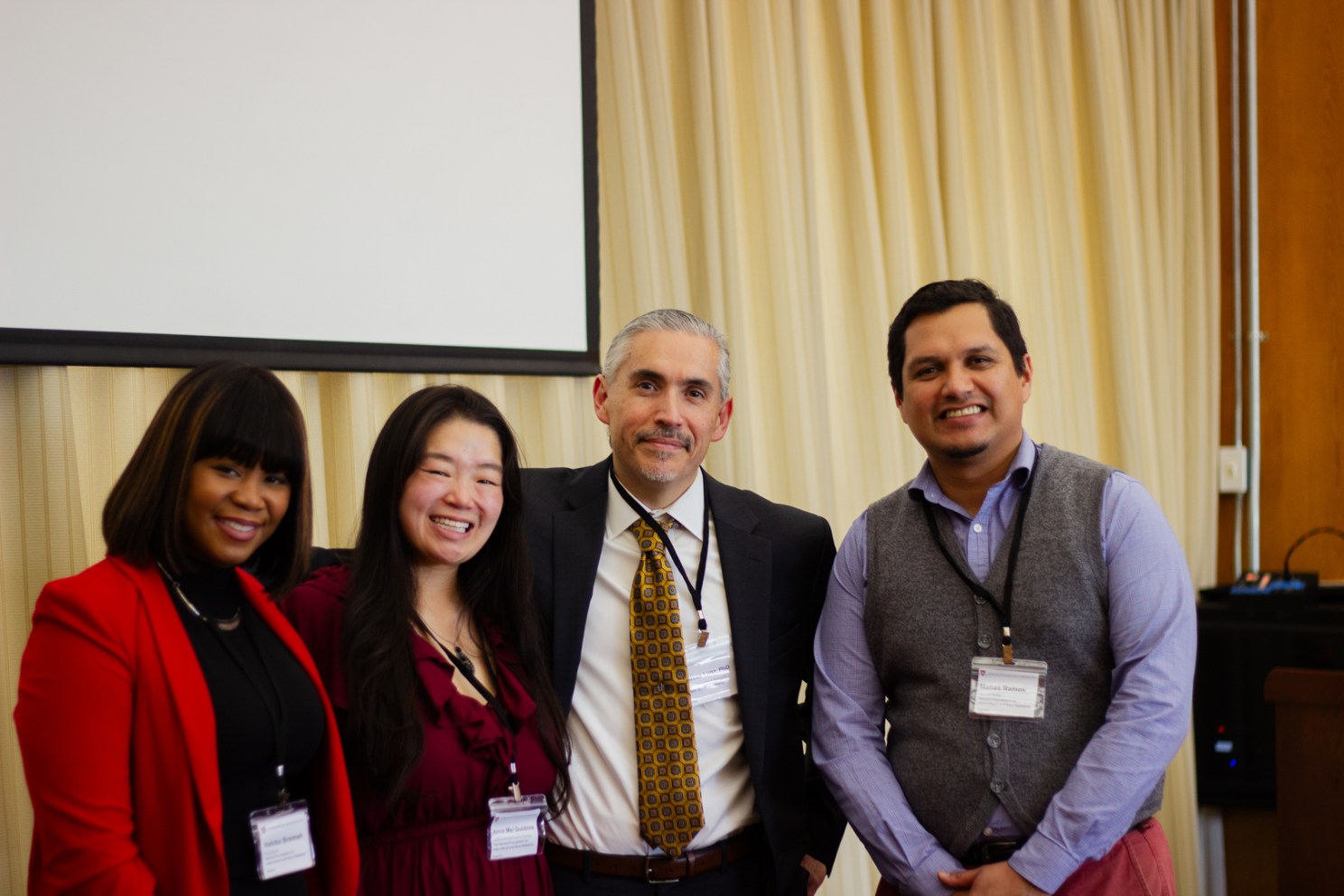Mobilizing environmental movements through mapping

Marcos Luna (pictured third from left) with the Harvard Foundation for Intercultural and Race Relations team.
Photo credit: Alfonso Godínez Aguilar
As a child growing up in the 1970s in Southern California, Marcos Luna was acutely aware of inequality issues and discrimination against the Latino community. He witnessed “blockbusting,” where real estate agents would tell white homeowners that minorities were moving into the neighborhood to scare them into selling their homes cheaply. Luna’s community also struggled with long-term effects of redlining, a discriminatory practice of denying financial services to residents based on the demographics of where they live, even though this was formally outlawed with the Fair Housing Act of 1968.
As the keynote speaker at Harvard’s Ninth Annual Scholarship and Social Justice Conference, Luna said poor public policies from past generations continue to impact communities today. In 1996, California passed Proposition 209, which prohibits state entities from using race, ethnicity, or sex as criteria for employment, public contracts, and public education. For a geography professor who utilizes statistics and mapping to make connections between environmental and social issues, Luna said policies like Proposition 209 that preclude the use of race make his work more challenging. He is currently working with the National Academies of Sciences, Engineering, and Medicine to develop recommendations for Justice40, a federal initiative that mandates that 40 percent of the overall benefits of certain federal sustainability investments go to “disadvantaged communities that are marginalized by underinvestment and overburdened by pollution.” Without access to key demographic data, Luna said it’s harder to answer the question “what is a disadvantaged community?”
Speaking to student researchers from over 20 colleges, Luna encouraged them to use their problem-solving skills to persevere through setbacks. In movements for social change, he said “you get used to failure, you get used to roadblocks.” Luna was forthcoming about some of his own mistakes in hopes that students could learn from his journey. “In the beginning, I didn’t know how to contribute,” he said. He encouraged students to proactively ask how they can help and to make sure they ask community members what their priorities are. He said it was also important to share research findings with them all along the way.
Luna discovered environmental justice work as a graduate student, after realizing his academic background in geography and GIS mapping could make a social impact. After joining the faculty at Salem State University in 2004, Luna got involved with Alternatives for Community & Environment to work on transit justice campaigns. For the past six years, he has worked with GreenRoots to analyze transit justice issues in Chelsea. He also worked with a coalition of environmental justice groups and policymakers to develop a Next-Generation Roadmap for Massachusetts Climate Policy in 2021.
Throughout his career, Luna has approached his role as a researcher and policy adviser with humility, centering the lived experiences and priorities of communities at the frontlines of injustice, focusing on building sustainable relationships and listening to community needs. He aims to motivate the next generation to engage in civic work. “So many people don’t volunteer because they’re not asked… consider yourself asked,” he said.




